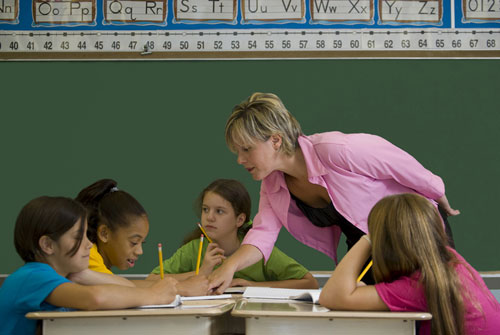Classroom Management: Student Behavior

Description
Student behavior varies wildly by grade level, location, and subject matter. The issues that a 7th grade life science teacher faces will be very different from the issues that an 11th grade chemistry teacher faces.
One of the main ways to combat poor behavior is by having clear expectations. Explaining to students exactly what you expect from them makes the student responsible for themselves and will prevent you from being the "bad guy".
Another way to improve student behavior is to BE CONSISTENT. If you as the teacher are consistent from the beginning of the year to the end of the year with behavior, noise level, and even grading, then the students in your class will adapt to the classroom culture that you have created. But teacher beware, choose your expectations wisely because you must be willing to follow through.
Examples/Scenarios
Clear Expectations:
- Post your classroom expectations and consequence steps in your room and reference them when applicable.
- List your expectations for behavior in your syllabus that both the students and their parents sign at the beginning of the year. This informs parents of your expectations and allows for easy reference during phone calls home.
- Also have a reward sequence for positive behavior to encourage students to behave appropriately.
Tips for Being Consistent:
- It is difficult for teachers to remember who did what when, so write it down. Have a spreadsheet with all of your students' names on it and mark with checks, pluses, minuses, etc for positive and negative behavior. You can also use this to reference in phone calls home to parents.
- If your consequence steps are posted, it is easy to let students know where they stand as well as see what their future consequences are if they continue to misbehave.
- If you say you are going to do something, then make sure that you DO IT! The quickest way for students to see that they can misbehave without consequence is if you don't follow through. So if you say you are calling home, then call home. Or if you say you will call and check to see if they made it to the office, then call and make sure they got there.
Consequences
What are your consequence steps and how do you notify students when they move steps? How will you keep track of students' misbehavior? What rewards do you have for positive behavior?
These examples are just a few of ideas to get you started. You need pick a set of steps that works for your class and your classroom culture. Also, don't underestimate the power of a stamp, piece of candy, or free bathroom pass!
Example of Consequence Sequence:
- Verbal Warning
- Move seat/Conference with student
- Call home
- Office referral
Example of Reward Sequence:
- Positive comment either verbally or written
- Listen to music during independent work
- Positive phone calls home
- Free bathroom pass/ Homework pass
Things to Do If It Goes Wrong
Before you have student behavior issues, ask your site administration for the policies and rules for classroom and school wide conduct. Each site will have different policies, so make sure that you know exactly what is expected of you as the teacher in terms of student behavior. BE PROACTIVE!
Another suggestion would be to ask your colleagues for how they would handle the situation or deal with classroom disruptions. Ask your colleagues if you can visit their difficult classes during your prep so that you can observe those strategies that are successful for them and adapt them to fit your classroom and specific needs.
Struggling in silence will not help you solve the problem.

